If you want to start a “lazy” garden at your dacha, delighting you with a riot of colors and aromas all summer, it is recommended to pay attention to perennials, which in landscape design belong to the so-called classical group, popular due to their unpretentiousness and variety of forms for more than two centuries.
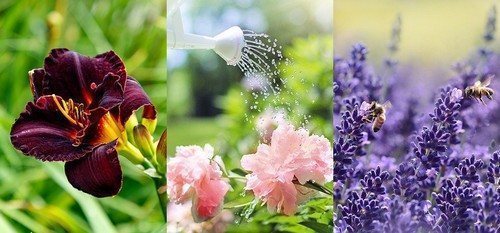
Lavender
The main flower of the Mediterranean blooms for 2 months and can serve in the garden as a hedge for walking paths, a frame for green lawns, lavender is beautiful in group plantings in flower beds.
The general classification divides lavender into groups - French and English. And only the second one is suitable as a trouble-free garden inhabitant, since it is winter-hardy and, unlike the French one, does not need to be dug up in the fall and transferred to a warm room.
Among its varietal diversity, noteworthy are:
- Alba - up to 50 cm high, snow-white in color, blooms well even in the shade.
- Munstead - bluish-purple flowers, no more than 30 cm in height, can be planted in drafts.
- Hidcote - represents a whole group of varieties that lend themselves well to shearing.
If you want to achieve solidity and density of plantings without infringing on the biological needs of plants, lavender bushes are planted at a distance equal to their height, and when forming a border - at intervals half as large.
All varieties of lavender attract bees and other beneficial insects to the garden, and after drying, the inflorescences can be used to make sachets.
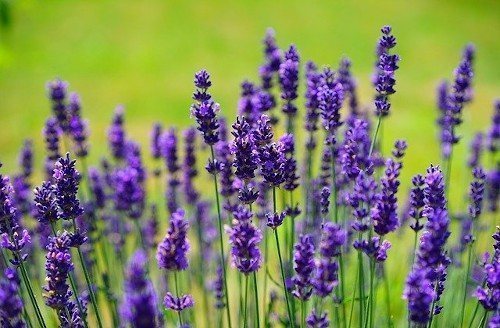
Echinacea
The flower's homeland is North America, where early settlers from Europe nicknamed it “black-eyed Susan” for its dark core. Two types of echinacea have been cultivated - purple and angustifolia, but in the work of breeders, three more species are often used - Tennessee, pale and special.
The most popular varieties of Echinacea are:
- Art’s Pride is a traditional amber-orange color, up to 75 cm high.
- Kim’s Knee High is unique in that the flowers gradually change color from pale pink to rich crimson.
- Kim's Moped - white petals combined with a golden-green center, does not exceed 35-40 cm.
- Magnus - violet-purple color is emphasized by a chestnut core.
Tall varieties make a luxurious backdrop for flower beds.
Echinacea has high immunity and is only rarely susceptible to infections caused by prolonged rainy weather, in particular, it is affected by powdery mildew. Dangerous pests include slugs and slobbering pennies.
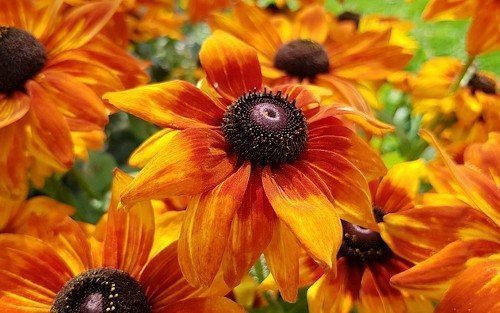
Day-lily
Recent trends in breeding work on daylilies demonstrate that more and more varieties with large flowers with double, highly corrugated petals will appear on the market.
Daylily is a stylish choice if you need to decorate a space with trees or shrubs. But the area should not be too shaded. Good company for this flower are physostegia, yarrows, ornamental grasses and dotted loosestrife.
Daylilies are especially loved by landscape designers:
- Middendorfa - blooms in early summer and again in autumn, each time for 3-4 weeks. The leaves reach 1 meter in length, the stems with flower heads are 80 cm in height.Varieties are presented in a yellow-orange palette.
- Hybrid - it includes all the variety of flower shapes and colors, among which there are not only blue shades. But there are mixed colors that resemble a gradient, wavy patterns similar to cappuccino, flowers with contrasting spots and stripes.
The site for daylilies should have neutral or slightly acidic soil. If clay predominates in it, compost is added when digging, if sand is humus.
For amateur flower propagation, only vegetative methods are recommended.
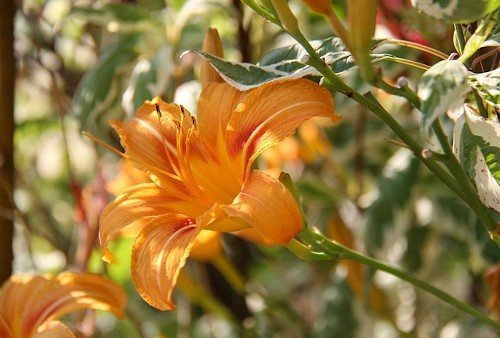
Delphinium
One of the tallest inhabitants of the garden has an unusual aroma, which, unfortunately, causes headaches for some people. But if there is no allergy to delphinium, this flower can become the “pearl” of the site, acting as a solitaire or an addition to a small fountain or waterfall.
Among the majestic variety of delphinium varieties, the following stand out:
- Blue Lace - double petals add spectacularity to sky blue flowers.
- Galahad is one of the earliest varieties of the flower, snow-white from petals to eye, up to 180 cm high.
- Guinevere - stem up to 200 cm high, semi-double flowers, lilac-pink.
Most delphiniums can, in principle, survive frosts down to -40 °C, but if a winter with little snow is possible, pruning is necessary. It is performed at the end of September, leaving no more than 30 cm of shoot height above the ground. To prevent the death of the stems, they must be coated with clay and sprinkled with mulch underneath. Also, before wintering, delphiniums require moisture-recharging watering.
In order for the delphinium to maintain its decorative appearance, it is recommended to replant it every 3–4 years in the spring. At the same time, you can get several cuttings from each bush, which should sit in pots in a greenhouse for a couple of weeks before returning to the garden.
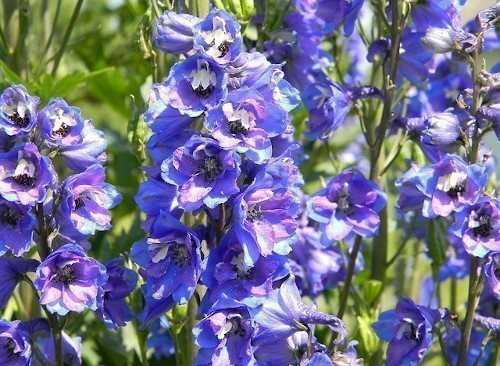
Coreopsis
An amazing flower, also known as the Parisian beauty, is found in summer cottages as herbaceous plants and shrubs, which are united by carved, figured foliage and bright petals in hot shades.
The most widely known types of coreopsis are:
- Large-flowered - flower diameter reaches 8 cm, most varieties are painted in yellow shades.
- Whorled - spreading shrubs with thin, needle-like foliage, decorated with yellow or red flowers with dark centers. The most luxurious variety - Ruby Frost - has pomegranate petals edged with whitish spots.
- Pink - often used even by amateur gardeners to breed hybrids. The flowers combine a pale pink base tone with a yellow center.
Coreopsis is planted in sunny areas with loose soil permeable to air and water. But unlike most other garden perennials, its species do not require fertile soil. And even more than that, due to excessive nutrient content, the flowering of coreopsis deteriorates.
To prolong the flowering of coreopsis as much as possible, it is necessary to promptly remove faded buds, and in low-growing varieties, even trim the branches on which most of the buds have dried.
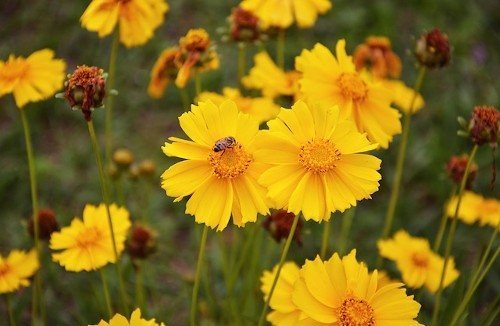
Peonies
Theoretically, individually, each peony variety does not have a long flowering period - it lasts only 8–14 days.But provided that specially selected varieties are planted in one flowerbed, the fragrant aroma and shaggy splendor of peonies can be enjoyed for 2 months.
Among peonies, the following varieties have legendary fame:
- Festiva Maxima - a flower bred in the mid-19th century, snow-white petals are decorated with crimson strokes.
- Felix Crousse - unusually large flowers for peonies are colored crimson-violet, with a silver stripe barely visible at the tips of the petals.
- Madame de Verneville is a white-pink color of flowers, but more important than the appearance is the aroma, uncharacteristic of peonies, reminiscent of a rose.
- Duchesse de Nemours is another fragrant peony, but this one is reminiscent of lilies of the valley. The petals are snow-white, but if you look closely, they seem to be illuminated yellow from the inside.
For peonies, choose an area protected from the wind. The soil should ideally be loamy; if the acidity of the soil is above pH 6.5, a little wood ash is added to it to lower this indicator.
After flowering is completed, it is contraindicated to cut peonies at the root - it is enough to simply remove the dried flower stalks, but the green foliage should remain: thanks to it, the peony accumulates nutrients for a safe winter.
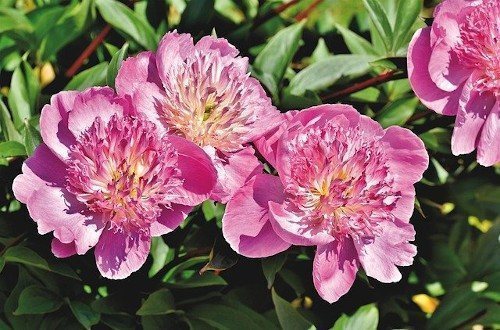
Liatris
This plant can bring an unearthly mood to the garden - the inflorescences are tall panicles that open from bottom to top or vice versa. They resemble something cosmic, molded from cotton candy, colored thin threads, and fur. Due to the fact that the height of liatris reaches 200 cm, and the length of the inflorescences is 50 cm, it is often used as a background for flower arrangements; it is exceptionally cute in multi-level flower beds.
This is not the first season that the following varieties of liatris have been in the tops:
- Alba is an exquisite white color, but due to the rarity of the flowers, the green stem shows through slightly.
- Kobold - does not exceed 40 cm, its panicles are pale violet in color.
- Floristan Violett - has the longest flowering, the color of the inflorescences is rich lilac, 80–120 cm high.
In ancient times, it was believed that liatris drove rodents away from the site, but in reality mice pose a threat to it, especially in winter, so for this season it is recommended to cover the plants with material that is insurmountable to their teeth.
Liatris does not react well to stagnant water, so drainage should be installed at the bottom of the planting holes. The area should be open to the sun - the shadow inhibits the development of flowers and makes the color scheme fade.
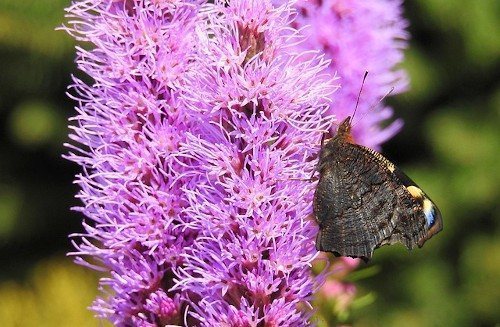
To summarize, it is worth noting that all of the flowers listed can grow well next to each other.


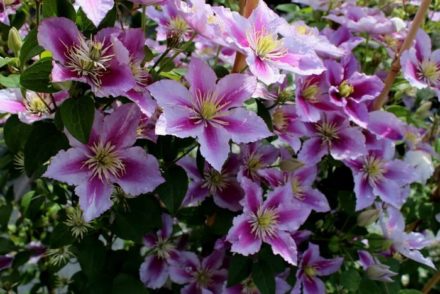
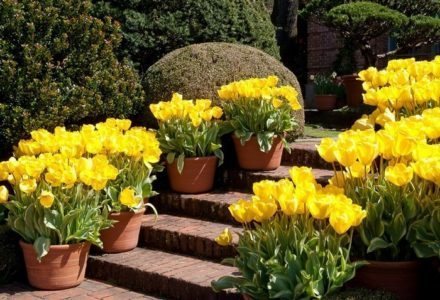
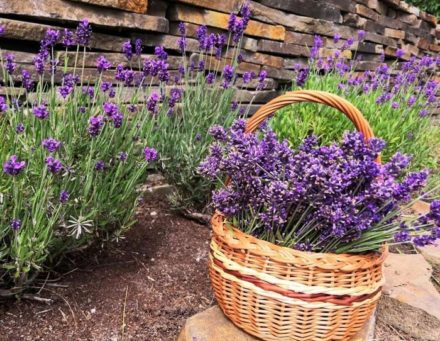
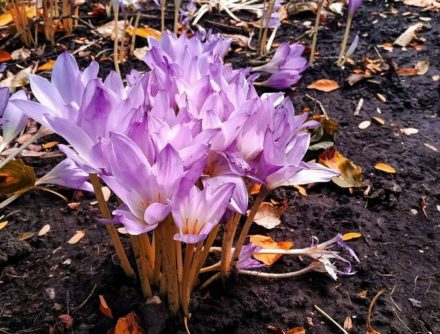
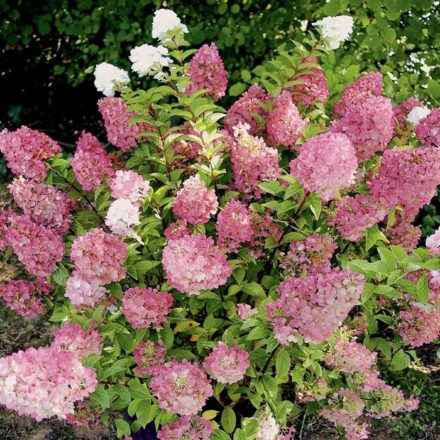
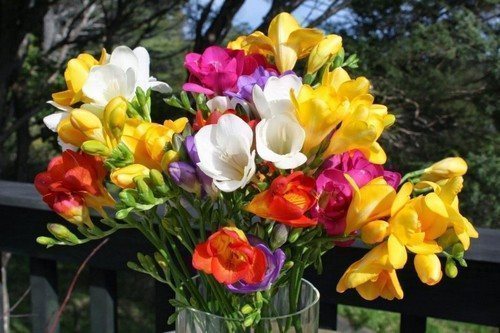
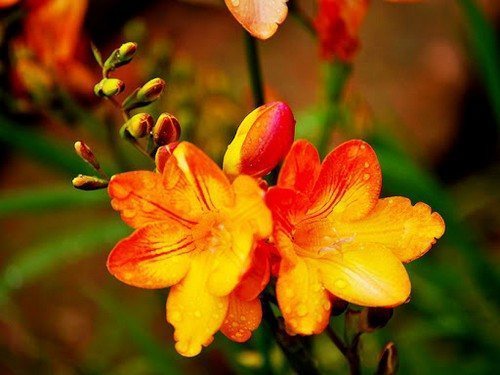
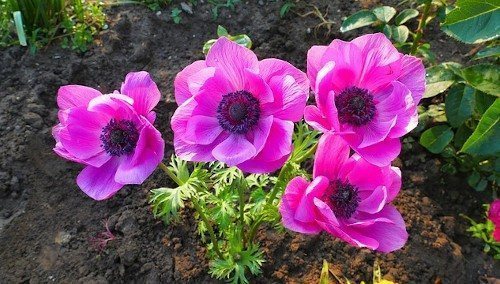

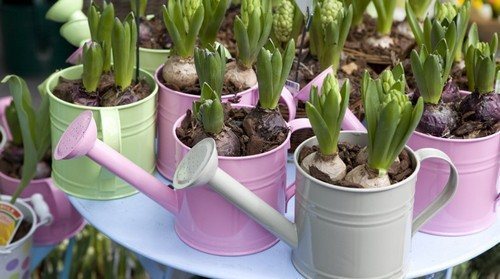
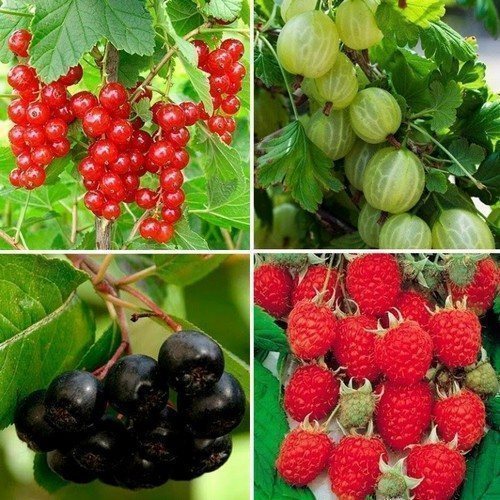
And every year I prune peonies after flowering, leaving small stumps, there seem to be no negative consequences.